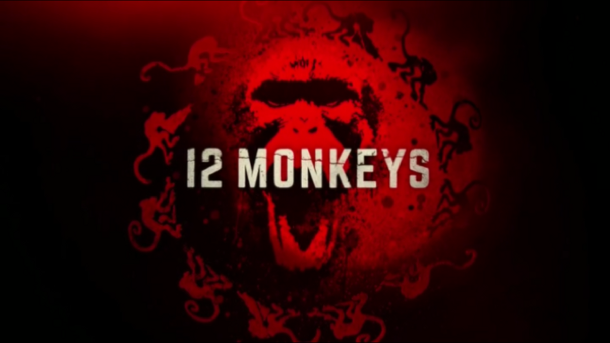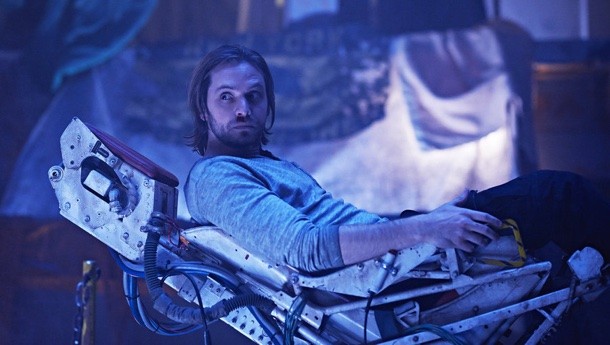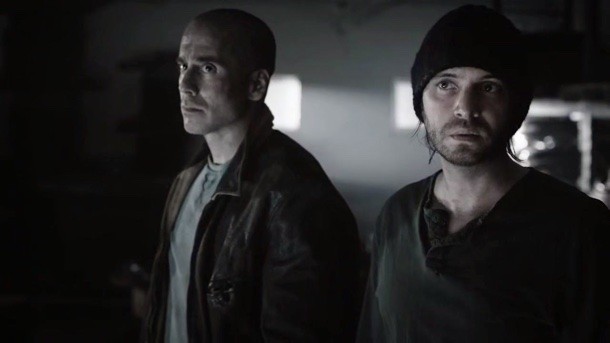Our extra-large special edition is here. Subscribe today and receive the 25% longer issue at no extra cost!
12 Monkeys Is A Must-See Show, Especially If You Loved Quantum Break

It took me a while, but I finally finished Quantum Break last week. As a longtime fan of Remedy’s work, the long-in-development game delivered everything I’d hoped it would.
I was intrigued by the approach to time travel and the futility of the story’s deterministic approach. But what grabbed me the most was the concept of time completely breaking. The stutters wreaking havoc with our world not only created impressive visual set-pieces, but helped create a sense of uncertainty even amidst the loudly beating drum of time simply “wanting” to happen.
It just so happens that one of my favorite shows on television, 12 Monkeys, started dealing with a similar conflict in recent episodes. Adapted from the 1996 Terry Gilliam film, it borrows the premise but goes its own fascinating way. It carefully balances faithfulness to the source with its own identity. I had the chance to catch up with showrunner Terry Matalas to talk a bit about his influences and the importance of relationships to his time-travel tale.

12 Monkeys sends travelers into the past using a process called "splintering."
While 12 Monkeys is a show about time travel, its beating heart is the complex relationships that are ever in flux. When we first meet Aaron Stanford’s James Cole, a traveler from the year 2043, he is crude, scattered, and of single purpose: stop a society-ending plague to save the world. It’s only in succeeding in his mission of murder that we’re clued in that time is a sinister, complex, and secretive monster.
Throughout the first season, we see Cole and his closest friend Jose Ramse, played by Kirk Acevedo, become at odds. Ramse discovers that if Cole alters the timeline, he stands to lose something precious. The result changes the dynamic between the two, something that is still being worked out during the in-progress season two.
Likewise, Cole’s relationship with Dr. Cassandra Railly (played by Amanda Schull) is an evolving and mutating beast with a life of its own. Cole’s mission begins because of a recording made by Railly moments before her death in 2015. However, upon encountering her in the past, he becomes attached, convinces her that he’s a time traveler, and ultimately taints her life. She becomes transformed, such that she takes on Cole’s single-minded determination while he softens, adopting her compassion.

James Cole (Aaron Stafford) and Cassandra Railly (Amanda Schull)
“We just try and play the real changes that would occur to someone facing these obstacles,” Matalas told me. “For Cassie, she's been through a lot. Her world has transformed, loved ones have been killed. We play her PTSD from it all. Cole has softened from his time in the past – his exposure to humanity. And Deacon [played by Todd Stashwick] is out for himself until he meets the woman of his dreams. People do strange things when that happens!”
All of these relationships need to fit in different time periods, as characters are meeting each other out of order. Time travel needs to have rules, but Matalas tells me that it’s crucial not to get hung up on them so much that it deflates the impact of character moments.
“The rules are important, but it's also not a lesson on quantum physics,” he says. “The time travel and their rules and twists have to make emotional sense first. For instance, in the first season, Cole goes back to into his own timeline in an attempt to save Cassie, but he needs help because he can't get too close to his other-self (audiences are familiar with this rule from Back to the Future). But what it gives you is a chance for him to team up with someone who hates him (Cassie's fiancé) but is also driven to find her. That's a great dynamic, and the rules fall into place around it.”

Jose Ramse (Kirk Acevedo) and James Cole (Aaron Stafford)
These rules, and this approach to time travel create a different atmosphere than Remedy’s setup in Quantum Break. Where Quantum Break handcuffs its characters to their fate, forcing them to make real the things they are so desperately trying to change, 12 Monkeys offers up hope. The heroes of the tale are on a crusade to save our world from the bleak, virus-ridden future from whence they come.
But in that agency comes different peril. If history can be altered for the better, then it can also be twisted toward a darker purpose. Is it better to be shackled to an immutable set of events or to suffer the risk of making things worse in the pursuit of bettering our possible future?

Quantum Break's Jack Joyce (Shawn Ashmore) finds his relationships turned upside down as time starts to fracture.
Neither of these options are compelling without a strong cast of characters at their core. Remedy’s crafting of Shawn Ashmore’s Jack Joyce, Aidan Gillen’s Paul Serene, and Courtney Hope’s Beth Wilder provides the depth necessary to push and pull the player to both understand but reject the concept of “fate.”
The relationships are complex, especially as we start to understand later in the game how the looping timeline has deepened the connections between characters giving compelling motive to their actions.
Likewise, 12 Monkeys lives and breathes because of its cast’s conflicting intents and desires. It turns out that part of the reason those character dynamics speak to me is that Matalas is an avid gamer.
“Amy Hennig's Uncharted series was influential – a great bromance!” he says. “BioShock Infinite and its surreal and terrifying look at the past. The Silent Hill games, without question. There is a lot of horror in our world. The Last of Us was definitely influential in both aesthetics and character growth. And the twisty world of Hideo Kojima's Metal Gear Solid definitely can be found in there as well.”
Recent events in the show have caused time to suffer a crippling wound. The result is a growing wave of disruption that is catastrophic for anyone caught in it. The effect isn’t entirely the same as Remedy’s time stutters, but the parallels are there.

As time breaks down in Quantum Break, it begins to "stutter," causing catastrophic damage.
Both works posit that man has the power to touch the fabric of our reality and, by doing so, scar it. Both explore whether our species has the capacity to heal our world and, if so, if we are wise enough to do so.
For now, Quantum Break is complete. There are questions left and, those paying attention see how and why there is room for that story to grow. As for Matalas and his team, 12 Monkeys continues to spill its secrets this season.
Each resolution leads to new complications and every answer simply breeds more questions. There’s more here than could possibly be tied up in the episodes remaining this year. With any luck, Syfy will renew the show and we’ll find out just what’s in store for Cole, Ramse, Railly, and the rest of the cast.
You can check out 12 Monkeys at 9/8 Central on Syfy.

Get the Game Informer Print Edition!
Explore your favorite games in premium print format, delivered to your door.
- 10 issues per year
- Only $4.80 per issue
- Full digital magazine archive access
- Since 1991









